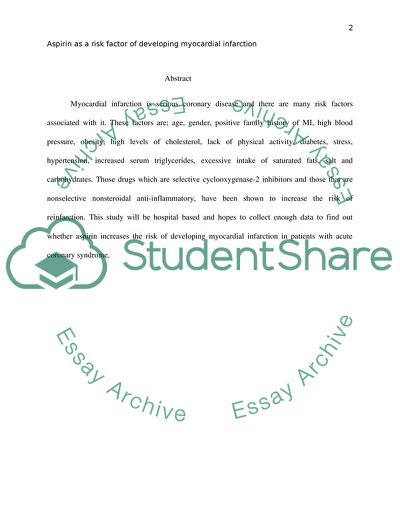Cite this document
(Aspirin as a Risk Factor of Developing Myocardial Infarction Research Paper - 1, n.d.)
Aspirin as a Risk Factor of Developing Myocardial Infarction Research Paper - 1. https://studentshare.org/health-sciences-medicine/1763243-does-aspirin-affect-the-risk-of-developing-myocardial-infarction-in-patients-with-acute-coronary-syndrome
Aspirin as a Risk Factor of Developing Myocardial Infarction Research Paper - 1. https://studentshare.org/health-sciences-medicine/1763243-does-aspirin-affect-the-risk-of-developing-myocardial-infarction-in-patients-with-acute-coronary-syndrome
(Aspirin As a Risk Factor of Developing Myocardial Infarction Research Paper - 1)
Aspirin As a Risk Factor of Developing Myocardial Infarction Research Paper - 1. https://studentshare.org/health-sciences-medicine/1763243-does-aspirin-affect-the-risk-of-developing-myocardial-infarction-in-patients-with-acute-coronary-syndrome.
Aspirin As a Risk Factor of Developing Myocardial Infarction Research Paper - 1. https://studentshare.org/health-sciences-medicine/1763243-does-aspirin-affect-the-risk-of-developing-myocardial-infarction-in-patients-with-acute-coronary-syndrome.
“Aspirin As a Risk Factor of Developing Myocardial Infarction Research Paper - 1”. https://studentshare.org/health-sciences-medicine/1763243-does-aspirin-affect-the-risk-of-developing-myocardial-infarction-in-patients-with-acute-coronary-syndrome.


